
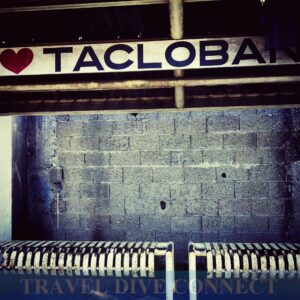 Tacloban was not the destination during my last trip but I needed to pass through the city. I dreaded to pass through it. It was my first time but it felt otherwise. Popular media had already mapped a Tacloban that suffered tragedies both natural and unnatural. The city, post Haiyan / Yolanda, was a picture of death, neglect, corruption and the best and worst in man.
Tacloban was not the destination during my last trip but I needed to pass through the city. I dreaded to pass through it. It was my first time but it felt otherwise. Popular media had already mapped a Tacloban that suffered tragedies both natural and unnatural. The city, post Haiyan / Yolanda, was a picture of death, neglect, corruption and the best and worst in man.
As a travel writer, I didn’t know how to approach. I didn’t want to spotlight the suffering, once again. I felt that doing so wouldn’t do justice to the people I’d met during my two days there. They were generally friendly and welcoming. They grinned at my stinginess, and helped me figure out budget-friendly options.
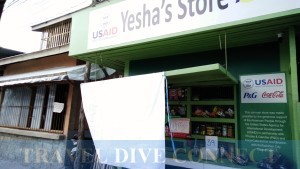
I also didn’t want to forget. Even for a first-timer, there were obvious scars. I saw a couple of abandoned weathered-down homes with family cars that had crashed into living rooms and porches. A school on the way to the airport had one of its block-long walls still in shambles, unfixed even after two years. In and outside the city, I observed structures with collapsed roofs. Signs that said “USAID Help from the American People” were on the walls of some homes and sari-sari stores.
 So, on the way back from Padre Burgos, I decided to spend the time before my flight exploring Tacloban. I thought to start small, a meal at one of its top-rated cafes and maybe a walk through the streets close to it. I chose Giuseppe’s because it was supposedly the favorite of social/aid workers who came to the city after the super typhoon.
So, on the way back from Padre Burgos, I decided to spend the time before my flight exploring Tacloban. I thought to start small, a meal at one of its top-rated cafes and maybe a walk through the streets close to it. I chose Giuseppe’s because it was supposedly the favorite of social/aid workers who came to the city after the super typhoon.
(The place certainly felt Western, offering a mix of American and Italian dishes. The prices were Manila-rate. Its guests seemed well-off.)
This was how I met Reynan. I was advised that it would be easier to hire a tricycle to the cafe, and from downtown to the airport. He offered to do both routes.
Reynan and His Tricycle Service
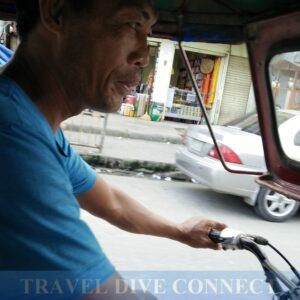
Reynan was born and raised in Tacloban. He had never left the city, even after Haiyan. He was of average build, and wore a blue thinning shirt. Nothing else struck me except for his eyes. They were dark brown and faded like a dull piece of glass.
His tricycle was one of only four that were running in the aftermath of the super typhoon. He serviced the desperate, with fees that reached Php 2,000 one-way. Those were dangerous times, he said. There were real risks in being out at night. You could get killed.
He described an apocalyptic scene. People were hopeless; they were on their own. They had no food and water for at least two weeks. To get by, people raided warehouses and stores. There were no policemen among them; no criminals. They were equals in their desperation. You stayed alert during nighttime. You always heard cries – of rape and abuse, of murder being committed, of men and women who had let grief take over.
That day, in between the cafe and the airport, he took me to an impromptu city tour. He wanted to show me the remains of what he had experienced.
His Second Life
For Reynan, he was one of the lucky ones. He pointed uphill, to where he and his three children ran. They awoke a few hours after midnight to a lashing storm. People were in a state of panic and were heading to higher ground.
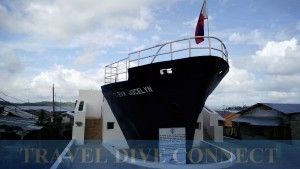
The shanty community near the port was one of the severely affected areas during Haiyan. The storm surge had unmoored ships, whipping them toward people’s homes. Reynan’s relatives were some of the casualties. A memorial now stood where a cousin’s house used to be.
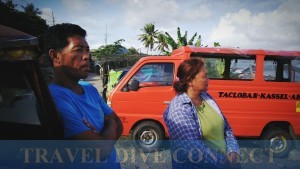
Another cousin survived. Her family, as well as others, was back living near the port. It was a picturesque scene on that clear day. But then again, her living situation was not because of the seeming calm of the seascape. She had no choice. Homes for their relocation were still unlivable. (I passed the site on the way to the city, and it seemed too far. I wouldn’t be surprised if there were those who would risk lives to be near livelihoods.)
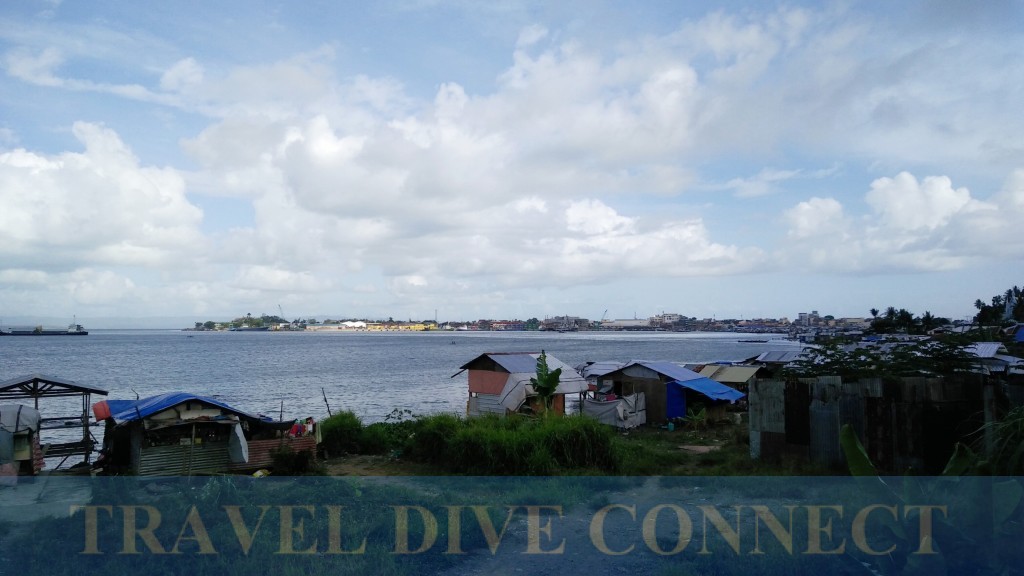
They shared their disappointment. They believed that the central government did not care for them. To this day, there was inaction and the lack of help. “Mas mabuti ba yung ibang bansa,” Reynan said. “Yung gobyerno natin kinurakot lang yung tulong na dapat napunta sa amin.”*
The Long Route to the Airport
We hopped into the tricycle and drove on. We passed the stadium that figured in several post-tragedy photos, the school with the collapsed wall, and the low-rise building that “saved” Ted Failon‘s life. Near the airport, Reynan turned left into another community that sprung up after Haiyan.
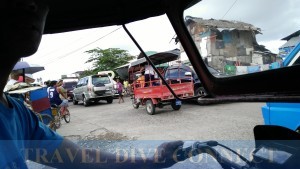
Again, he decried an absentee government that let people back into a danger area. The community, he said, was completely destroyed by the super typhoon. Reynan worried that the place was now overrun by drug pushers and addicts. (This concern did not stop him from taking me there.)
We made it to the airport after several detours. I asked my final question: OK na po ba kayo? (Are you now OK?)
Reynan said that he won’t ever be OK. He won’t forget what he had gone through. A little rain triggered fear in him. His wife, who lived in Batangas then, thought he and their children were dead. How can you recover from something like that, he asked.
I had no answer, of course. I was just thankful that he trusted me with his story, his Tacloban.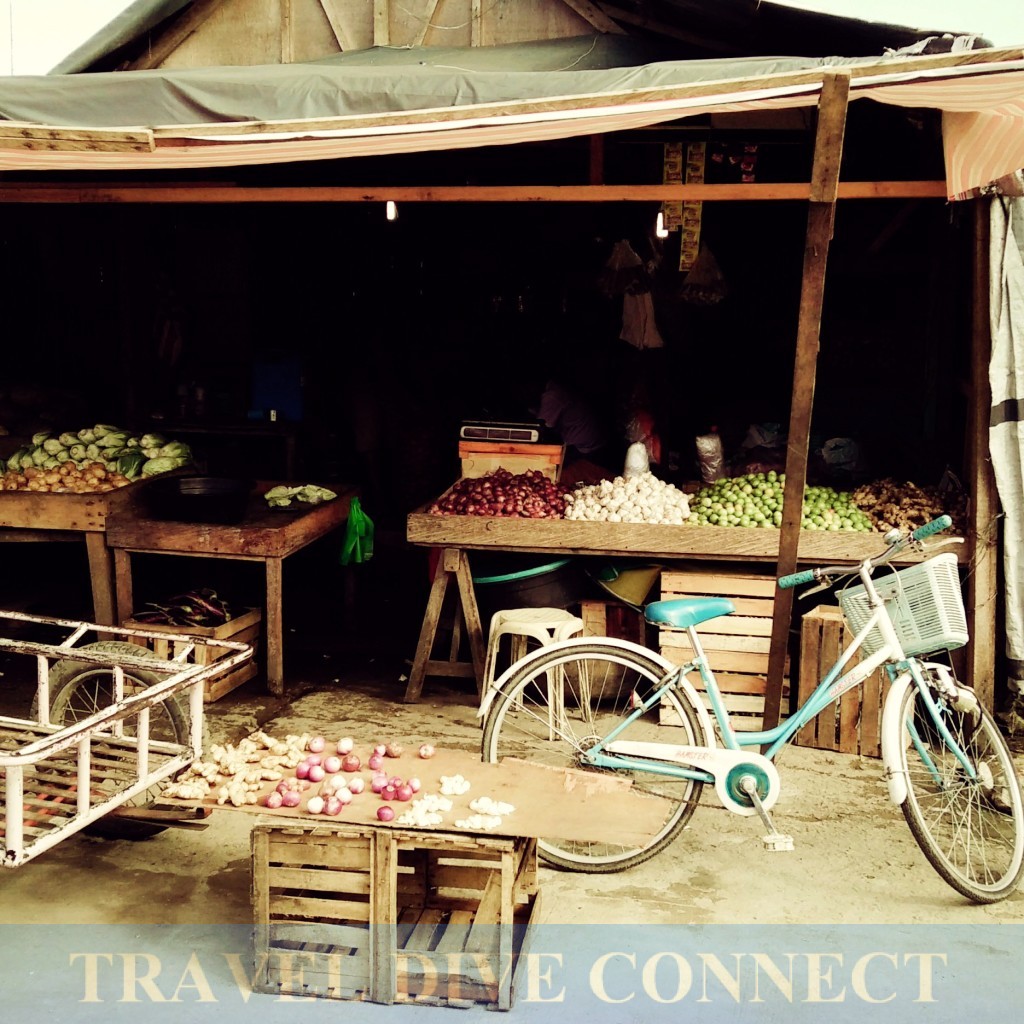
*”The other countries did better,” Reynan said. “Corruption in our government took away help that was supposed to go to us.”
